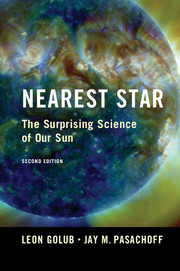5 - Eclipses
Published online by Cambridge University Press: 05 February 2014
Summary
The everyday sun dazzles the eye on a clear day. But about every year and a half, millions of people who are lucky enough to be in the right place on Earth see the brilliance of the Sun covered up. When even a single per cent is left visible, the sky remains blue and the event is not very spectacular. But when that last per cent disappears, the light level drops by an additional factor of 10,000, the sky turns black with pinkish color all around the horizon, the birds go home to roost and, as observers throughout the centuries have described, “day turns to night.”
OBSERVING ECLIPSES
A total solar eclipse is an astounding sight, one that seems to awaken primal fears. Those who see one never forget it, and often come back to see more. The world of travel has advanced, and it is much easier now to fly off, as one of us did, to Siberia in 2008, to China in 2009, to Easter Island in 2010, to Australia in 2012, and to Gabon in 2013, than it was for scientists of 1936 to travel in a private railway car to Siberia, or even for Thomas Alva Edison and other scientists in 1879 to travel from the eastern United States out to Iowa.
- Type
- Chapter
- Information
- Nearest StarThe Surprising Science of our Sun, pp. 128 - 168Publisher: Cambridge University PressPrint publication year: 2014



